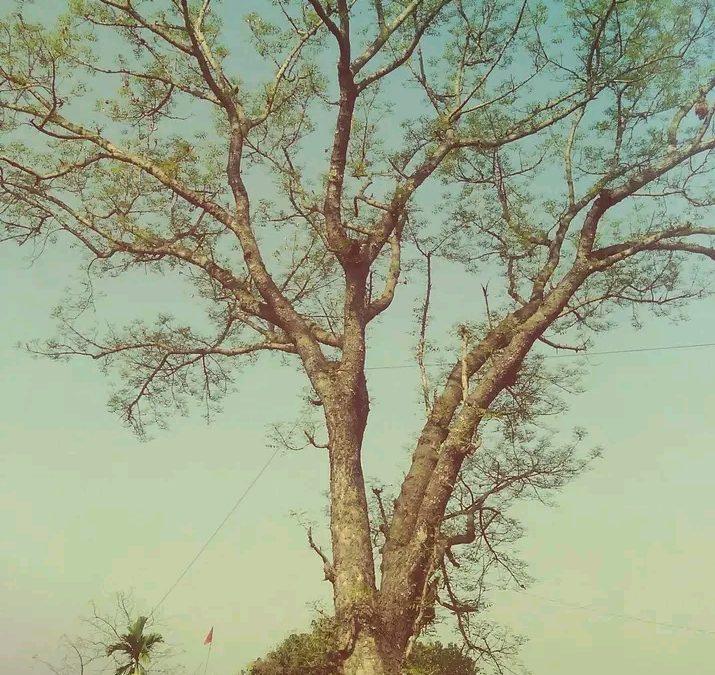Mahogany tree | Swietenia mahagoni.
Mahogany tree is a species of tree in the genus Swietenia and family Meliaceae. Three species are known to live in the Caribbean, Central America, and South America.
They are known for their beautiful, dark wood with a reddish color, due to which the tree has been heavily logged and is now an endangered species.
Mahogany Tree or Swietenia mahagoni.
Common name: Mahogany
English name: Mahogany, Spanish mahohany
Scientific name : Swietenia mahagoni (L.) Jacq.
Family: Meliaceae
Other Names: Mahogany, Mahogany, Mahogany, Mahogini.
English : mahogany, mahogany tree.
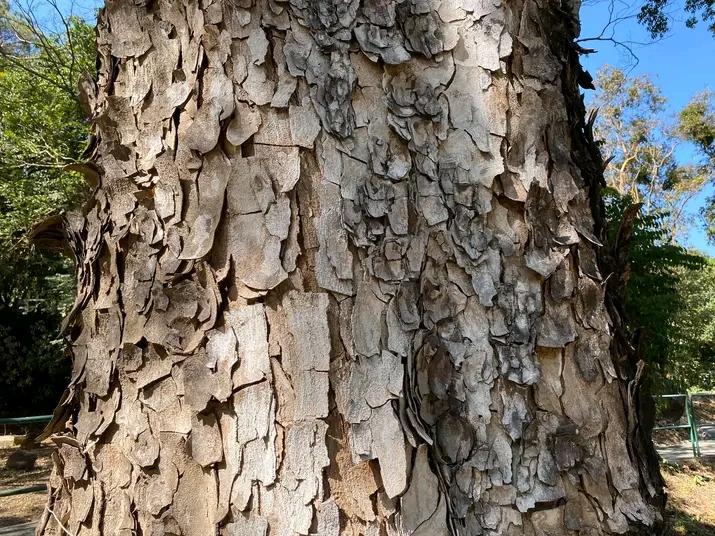
Mahogany Tree or Swietenia mahagoni
Introduction to Mahogany Tree.
Mahogany tree is currently popular in the Asian continent. Two separate species of tree are known as mahogany. Mahogany species have small leaves and macrophylla species have large leaves. The plant is native to the Indian Archipelago.
Hundreds of years ago, this tree was considered as a species of this country. Mahogany wood is reddish to brown. Mahogany grows best in dry soil. The flowers of the plant are green and the leaves are compound. Four pairs of leaflets.
Mahogany is a tree species. Due to financial gain, this tree is widely planted in different countries. As a result, the abundance of these trees can be observed in all countries. The oil made from the seeds of the mahogany tree has special benefits in controlling insects.
History of the mahogany tree.
Mahogany trees are now found growing almost everywhere in the Asian continent. However, their original habitat is the tropical region of North America.
Especially the West Indian Islands are identified as their original habitat. This plant has spread to different parts of the world including India through European traders. These plants grow naturally in southern Florida, USA.
This tree is cultivated in different countries of the world. Different species are known as big or small mahogany. Mahogany leaves fall in spring in Bangladesh. After some time new leaves grow. This tree is mainly popular and known to the public for its valuable wood.
The wood of this tree is very hard and densely fibrous. The wood of this tree is mainly used for making furniture. Besides, this tree is planted along the road as a shade tree.
Types of mahogany trees.
There are three species of mahogany trees:
- American Mahogany: Swietenia mahagoni.
- Honduras Mahogany: Switenia com.
- Bigleaf Mahogany: Swietenia macrophylla.
Nevertheless, they are very similar. All three come from the same plant kingdom, phylum Tracheophyta, class Magnoliopsida, order Sapindales, family Meliaceae, and of course the same species, Swietenia. Although they come from Latin America and South America, Americans are in the northern part of the range. Hondurans are found in the more southern part of that range. Bigleaf is more common in the middle, from southernmost Mexico to north-central Bolivia.
It is important to note that many species are considered ‘true mahogany’. These are species that the wood industry would call mahogany but are not part of the three species. This is because all three species are endangered, and so the alternatives allow for reddish-brown-looking furniture and musical instruments without endangering the tree.
American Mahogany: Swietenia mahagoni.
Swietenia mahagoni or American/Cuban Mahogany is a fast growing semi-evergreen tree. It can grow 40-60 feet tall and a canopy wide. In the early years, its bark is gray, but as the tree matures, it turns dark brown.
Four to eight inch leaves come in clusters, each leaflet about 1/4 inch long. The green and white flowers are not easy to spot because they are only 3-6 inches long and blend in well with the foliage.
It has been cultivated for so long that it is difficult to trace the exact origin, but in modern days, this species can be found anywhere in Central and Latin America where it can grow. It is often referred to as root mahogany.
Switenia humilis, or Honduran/dwarf mahogany, is native to southern Mexico but north of the South American continent. However, plantations grow the plant as far south as Central-South America. It has smaller leaves than large leaves but larger leaves and leaves than Cuban. They can only grow to about 20 feet tall, and the trunk tends to be 3 feet wide.
Source of this tree.
Their original habitat is the tropical region of North America. Especially the West Indian Islands are identified as their original habitat. This plant has spread to different parts of the world including India through European traders. These plants grow naturally in southern Florida, USA.
This tree is cultivated in different countries of the world. Different species are known as big or small mahogany. Swietenia mahagoni and Swietenia macrophylla species are cultivated in Asian continent. Inside it, trees like Swietenia macrophylla are more common. Their leaves are quite large.
American Mahogany Tree Appearance and Life Cycle.
In the wild one of these trees will look like a tall evergreen that provides sloping shade. The bark is light gray-brown in appearance, with irregular fissures. Leaves are flat but narrow, arranged on a single stalk but lacking a terminal leaflet.
Bigleaf Mahogany: Swietenia macrophylla.
It is a sapling of the African mahogany tree. To people, this tree is better known as Lambu tree. Because this tree is very tall in size and height. The wood of this tree is very beautiful and expensive. This tree is appreciated by all for its beautiful and valuable wood.
This tall mahogany is a woody plant species. Farmers plant these trees to get financial benefit as soon as possible by planting trees. Oil made from the seeds of the mahogany tree is particularly useful in controlling insects.
This tree is also called by other names like Mahogany, Mahogany, Mahogany, Mahogini etc.
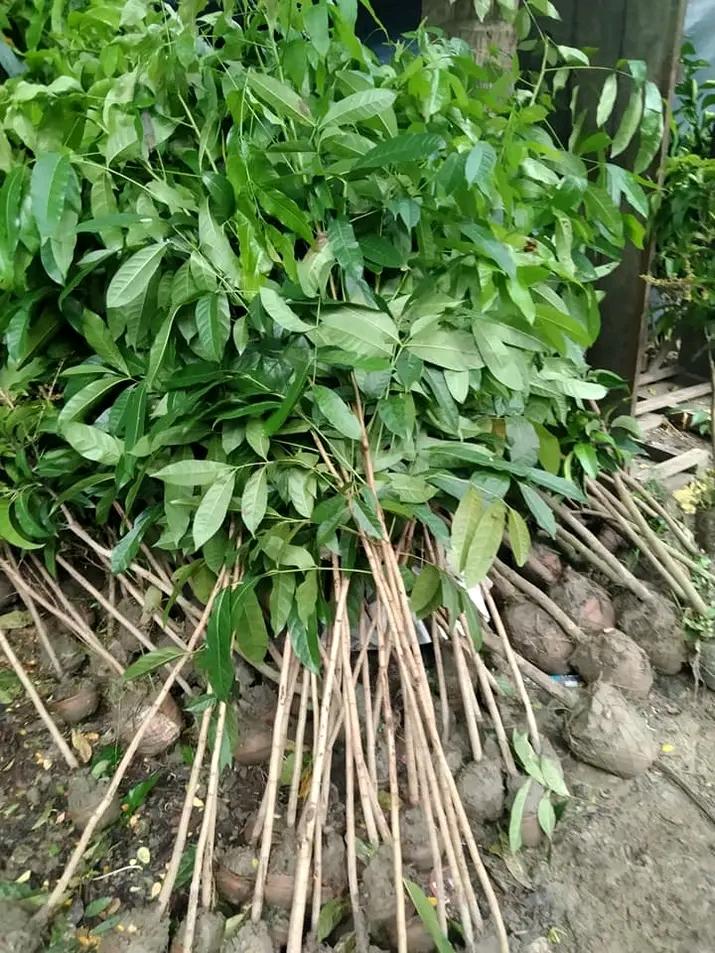
Mahogany plant or Swietenia mahagoni plants
Introduction.
Mahogany is currently popular in the Asian continent. Two separate species of tree are known as mahogany. Mahogany species have small leaves and macrophylla species have large leaves. The plant is native to the Indian Archipelago. Hundreds of years ago, this tree was considered as a species of this country.
Swietenia macrophylla mahogany usually.
It is at a height of 50 meters. Wood reddish to brown. Mahogany grows best in dry soil. The flowers of the plant are green and the leaves are compound. Four pairs of leaflets.
Swietenia macrophylla Mahogany Tree Breeding.
When the tree is 20-25 years old, the tree begins to flower.
It occurs in plants self-pollination and cross-pollination. But when pollination occurs, the small leafy flowers along a single stem will wither and be replaced by thick hard brown pods. Inside the pod is a cluster of seeds. From these seeds, the new mahogany tree grows. Although some people claim that grinding the seeds into a powder can be used for traditional medicine, this is not commonly done. Since the tree has become rare, nowadays only the seeds are used in breeding.
Swietenia macrophylla leaves.
The leaves are a beautiful green color, some species have leaves up to 45 cm long, the leaflets are equal in number and connected by a central midpoint.
It is Swietenia macrophylla or American mahogany with many leaves.
Honduras mahogany: Swietenia com.
Seed collection : January-February.
Seed weight: 1600-2000 per kg.
Common Uses : Wood reddish, very hard, takes a good polish. Weight 650 kg/cubic meter.
Honduras Mahogany Fruit.
The fruits are often called ‘skyfruit’ because the fruits rise towards the sky instead of hanging down. The hard capsule containing the seeds can grow up to 40 cm in length, with each fruit pod containing about 70 seeds.
The dark brown flaky bark has a rough texture and is often recorded as having a sweet smell.
Fruits of Mahogany Tree.
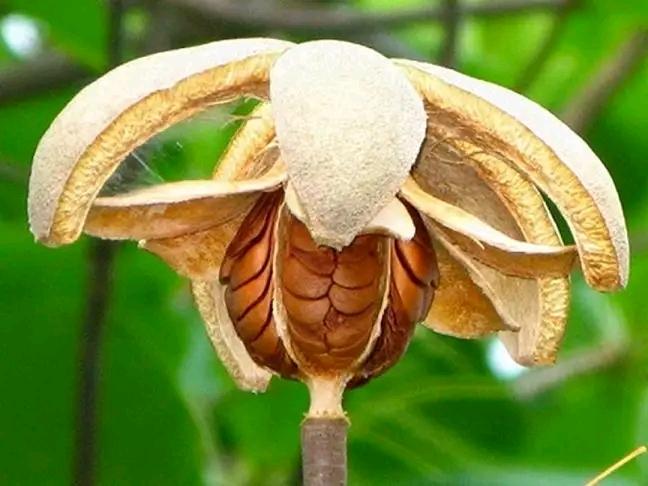
Fruits of Mahogany Tree
Type: It is a dicotyledonous herbaceous plant. It is the common name of some species of the genus Swietenia in the family meliaceae (neem). Within these species, three species are specifically identified as mahogany. These species are – Swietenia mahagoni (L.) Jacq., Swietenia macrophylla King, and Swietenia humilis Zucc.
Mahogany tree leaves.
Mahogany tree leaves are dark green in color. Leaves average width 1.5 to 3 inches, length 5 to 6 inches. If you rub or crush the leaves with your hands, the smell spreads. Mahogany leaves fall in spring (March) in Bangladesh. After some time new leaves grow. This tree is popular with the public mainly for its timber. Its wood is very hard and densely fibrous. The wood of this tree is mainly used for making furniture. Besides, this tree is planted along the road as a shade tree. This tree is popular with the public mainly for its timber. Its wood is very hard and densely fibrous. The wood of this tree is mainly used for making furniture. Besides, this tree is planted along the road as a shade tree. The page is the editor of the respiratory process.
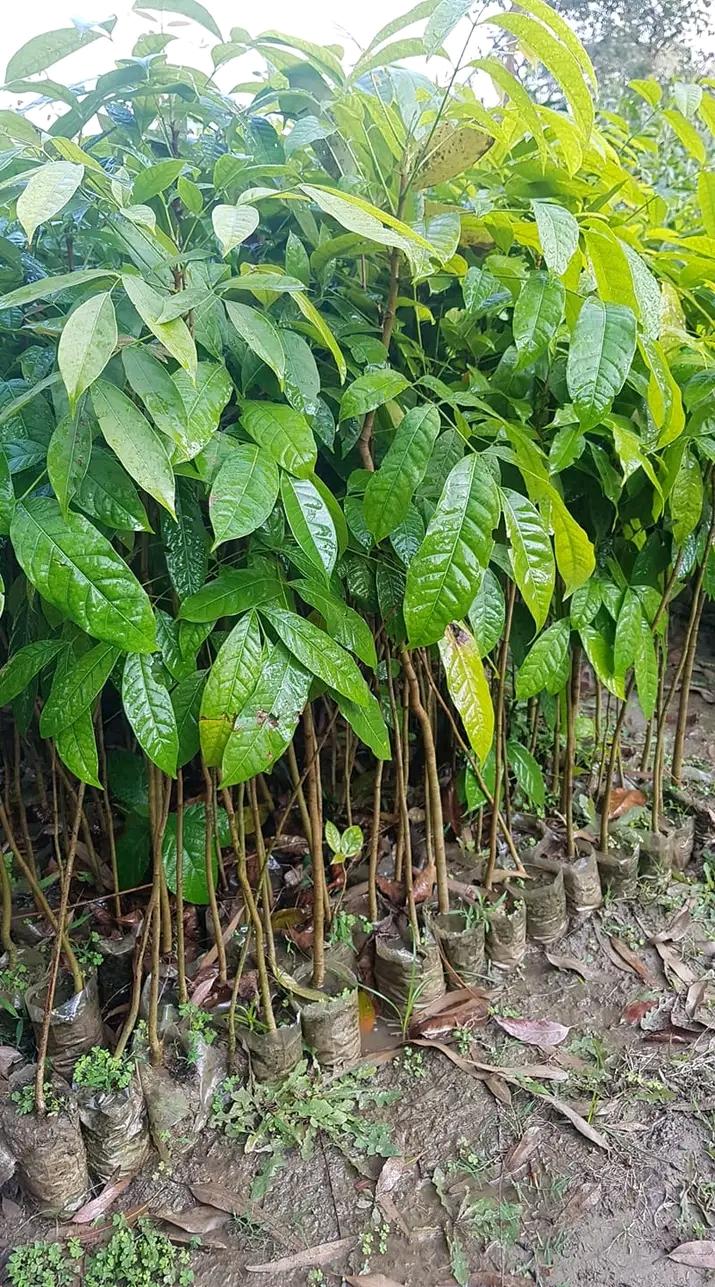
Mahogany tree leaves
Mahogany tree roots.
Mahogany tree roots are tough. Spread across many places. There are numerous roots. One of the main roots. These roots absorb salt and water from the soil. All the necessary food is absorbed by the roots of this plant from the soil. The roots are red in color. 70 percent of the roots are under the soil and 20 percent of the roots are above the soil.
Importance of mahogany tree.
Mahogany wood is very hard and durable. The color of this wood is reddish.
However, when the tree is more mature, the color of the wood often appears dark brown. Mahogany wood grain is very fine.
This wood takes a very nice polish. This wood is widely used in making all kinds of furniture for the home.
There is use. Besides, mahogany wood is also good for making house doors and window frames.
Mahogany wood also makes a variety of fine artefacts.
The wood price of this tree is very high in the international market. Due to the strength of the wood of this tree, it is used to make various furniture, vessels, jewelry, traditional sculptures etc. Since the leaves of this plant are a type of medicine, insects cannot come to this plant. The oil extracted from the leaves of this plant is used as various insecticides and to repel mosquitoes. Apart from this, it is also used in making soaps, paints and varnishes.
In addition, the most amazing feature of this tree is that the leaves of this tree are effective against blood pressure, asthma, cancer and diabetes and other serious diseases of the human body.
Among the farmers they are making double profit every year from this tree because not only using the wood but also using the leaves and seeds of this tree can double the profit.
A mahogany tree can grow into a 12-year timber crop. As the quality of this tree is more than other trees, experts recommend everyone from farmers to common people to cultivate this tree.
The fruit of the mahogany tree is used as an insecticide.
From the results obtained here, the extract and oil collected from the mahogany fruit are described as herbal pesticides.
Firstly:
2 to 2.5 kg mahogany fruit should be chopped and crushed and soaked in 10 liters of water in a clay pot. After 3 to 4 days the extract is ready for use. The extract should be filtered through a cloth and mixed with a small amount (50 grams) of soapy water or detergent and applied to the crop field. The mixture is suitable for paddy crop. The extract plays an effective role in control of rice crop pests (moths, leafhoppers, brown planthoppers). Besides, the extract can also be used on vegetables (cabbage, cauliflower, cabbage, tomato, beans, burdock). The second time, it can be soaked in 5 liters of water and sprinkled once again after 3-4 days. Residues of extracts/green leaves used as organic fertilizers in rice and vegetable seedbeds reduce insect pests in seedling production.
Second:
200 to 250 grams of semi-ripe fruit seeds of mahogany should be crushed or crushed along with 500 grams of fruit bark powder or leaves in 5 liters of water and should be burnt for 40 to 45 minutes in an earthen pot. After 5 minutes of burning, 50 grams of cloth should be mixed with raw soap or detergent, 10 grams of mulberry and 5 grams of Sohaga clay pot. Stir the mixture with a wooden or bamboo stick. If the extract is prepared in this way, cool the extract, mix it with 5 times the amount of water, strain it well and apply it to the leaves of the affected plant. If the extract is used in this way within 1-2 days, good results will be obtained and it is useful in suppressing the pests of brinjal crops. Particularly useful in control of jab beetles, leaf borers and fungal diseases. Thirdly: Take 200-250 grams of seeds, peel them, soak them in 1 liter of water for 3-4 days, filter them, mix them with another 9 liters of water, make an extract, mix 1 spoonful of jet powder and apply it to the crop field (effective in suppressing grasshoppers, leaf-wrappers and brown grasshoppers).
Medicinal Properties of Mahogany.
In diabetes:
The white skin of mahogany fruit can be soaked in water to control the disease in diabetic patients. It keeps sugar under control.
To increase digestion:
Mahogany tree bark extract is energizing and improves digestion.
Cancer prevention:
Eating beech, fruit and root powder prevents cancer.
Herbal pesticides:
The oil is made from the white part of mahogany seeds. This oil is used as herbal insecticide.
Disadvantages of Mahogany Tree.
However, this exotic plant has beneficial aspects as well as harmful aspects. The noxious sap of mahogany leaves makes the soil infertile, no insects can survive. No animals and birds eat the fruit of this tree. The leaves of this plant pollute the water fatally. As a result, farmed fish, fish do not grow normally. This plant is responsible for Newcastle disease, harmful to poultry and birds.
Cultivation Method of Mahogany Tree.
Mahogany is native to Jamaica and Central America. There are 2 names available as species of this tree.
Among these, Swietenia macrophylla is the main species in Bangladesh. Mahogany trees are more available in America, China, Japan, Russia. goes
At present, this tree is being planted at a large rate in almost every country to create afforestation by government and private initiatives.
Cultivation of mahogany trees is increasing in roads, embankments, homesteads, institutional premises, social forests and private forest gardens.
It is a dicot plant. The stem of this plant is long, hard and brown in color. Leaves are compound. Flowers greenish-white.
Fruits are brown in color, oval in shape and quite large in size.
All the leaves of this tree fall in winter. This is why it is called a leafy plant.
Mahogany trees require planting mainly from seed.
Seeds should be collected in the months of March-April and sown in the seed bed of the nursery.
Mahogany seedlings are planted from June to September. This tree grows well in high and medium high land.
Mahogany is known as a high quality timber producing plant.
Mahogany wood is highly valued for making house doors, windows and furniture.
Mahogany wood grain is very fine and dark brown in color.
This wood takes a very good polish.
Seed collection and planting.
Mahogany trees are mainly planted from seed. But stumps or heads can also be planted.
Seeds should be collected from February to April and sown in nursery seed beds or polybags.
Seeds should be sown in polybags with soil mixed with two parts loam soil and one part organic manure. Two seeds should be sown per polybag.
The seeds should be sown 8-10 cm apart in the bed rows. Seeds should be inserted 3-4 cm deep in the soil.
The seeds should be planted at a slight angle so that the fins of the seeds are facing upwards.
Light irrigation should be done after sowing the seeds. The seedlings should be covered for shade during the afternoon and evening when they are young.
These seedlings are planted in the month of Shravan-Bhadra or next year. 20-30 days for seed germination. takes
It is better if the planting distance of seedlings is 9-10 meters.
Soil preparation.
Mahogany trees grow well in high and medium high land. Loam and silt-loam soils are best for mahogany trees.
The selected area should be cleared and leveled before planting.
The length, width and depth of the pit should be 60-80 cm depending on the size of the seedling. After digging the hole, manure should be mixed in the soil of the hole.
The hole filled with soil mixed with manure should be left for 15 days. After that, the soil should be re-turfed and planted.
Rules for fertilizer application during soil preparation.
At the time of soil preparation, organic manure 10-15 kg, ash 1-2 4 kg, urea 200-300 gm, TSP 100-500 gm and MOP 50-100 gm should be given.
Water should be irrigated during drought.
Regular weeding should be done. At the seedling stage, the lateral buds of the main plant should be removed. Poles and fences should be provided in the plantation.
After irrigation, hard clay soil should be applied to the trunk of the mahogany tree. After this tree grows, the branches should be pruned and made into a structure.
Details about Mahogany Cultivation.
This mahogany tree is known as an evergreen tree in India. Its height can increase up to 200 feet. Due to continuous crop losses for several years, farmers have turned their attention to new methods of cultivation.
Since last year, the tendency of farmers to cultivate trees has increased. At present, farmers have taken initiatives to cultivate new types of crops of better size, among them sandalwood, mahogany, teak trees. They are earning good money by cultivating them. Evergreen mahogany trees grow up to 200 feet tall. The wood of this tree is red or brown in color and cannot be damaged by water. This important mahogany tree is cultivated in areas where there is less risk of wind.
Mahogany seeds for storage crops.
200 grams of mahogany fruit seed powder can be used for 1 maund of grains (seeds should be dried well in the sun and powdered). Mix well with cereals and store in airtight packets.
650-750 grams of white shelled seeds are obtained by peeling 1 kg of seeds. White shell seeds from 312 kg with the help of hand 900 ml. to 100 ml. Mahogany oil is available. Breaking in the expeller can yield more oil. After making the oil, the residue can be dried thoroughly in the sun and stored in vacuum polybags. Mahogany fruit ripens in January, February. 50-300 or more mature mahogany fruits per tree per year. Each fruit weighs 150-600 grams.
The fruit contains 35-70 seeds which are brown in color. Mature seeds are preferred. But if you want to get the extract from the raw fruit, it can be used from month. Mahogany fruit bark can be dried and powdered and stored in an airtight container for use in other seasons. It should be remembered that if the fruit is collected and the peel and seeds are dried well and stored in an airtight container, the fungus will accumulate. It is best to dry in the sun occasionally. Because fruit seeds and peel have more capacity to collect moisture from air.
The white part of mahogany seeds is used to make oil and make herbs.
30-35 ml in 10 liters of water to suppress rice enemies. The medicine should be mixed with 1 spoon of detergent/jet powder and wet the buds and leaves of the rice crop well. Application of straw and leaf powder to paddy fields helps to retain plant nutrients in the soil. It also destroys harmful insects in the soil. Crop yield also increases. Salinity is reduced to a great extent.
People should plant more mahogany trees.
Don’t forget to share with your friends. You can also visit our another post;
The Holy Quran (Al- Quran). The Complete Code of Human Life.

